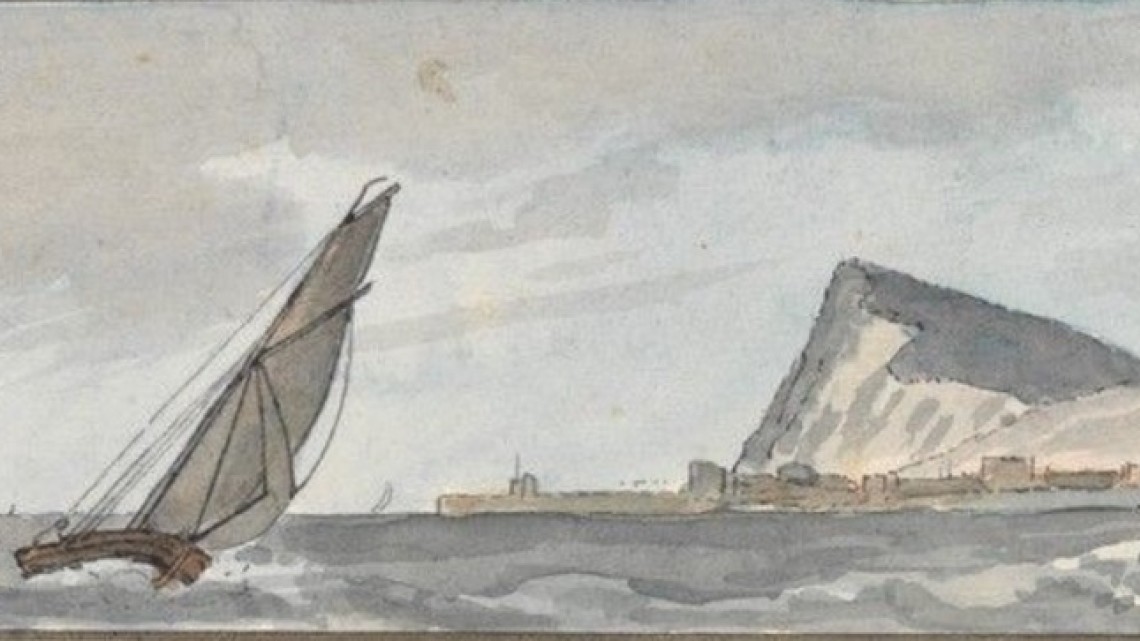
A watercolor ‘view’ by British artist John Thomas Serres (1759–1825) showing the South Foreland and Shakespeare's Cliff. Yale Center for British Art, Paul Mellon Collection.
News directly from Cornell's colleges and centers
Watercolor views advanced the British empire
By Kate Blackwood
It was like a Google Earth project for eighteenth century Britain.
From 1799 to 1800, in the midst of the Revolutionary Wars, the British Admiralty sent artist John Thomas Serres sailing in warships along the coast of France to paint the landscape. The resulting sketchbook and 24 horizontal watercolor paintings were not meant to be decorative, wrote Kelly Presutti. Rather, the project was intended to give British captains a navigational edge against its enemies.
“In the midst of a war, at a time of crisis, the Admiralty turned to an artist,” said Presutti, assistant professor of history of art and visual studies. “I wanted to know what they thought he contributed, what they valued in art that science couldn’t supply. I’m always looking in my work for places where art reaches out beyond its perceived domain and intersects with other practices.”
Media Contact
Get Cornell news delivered right to your inbox.
Subscribe
